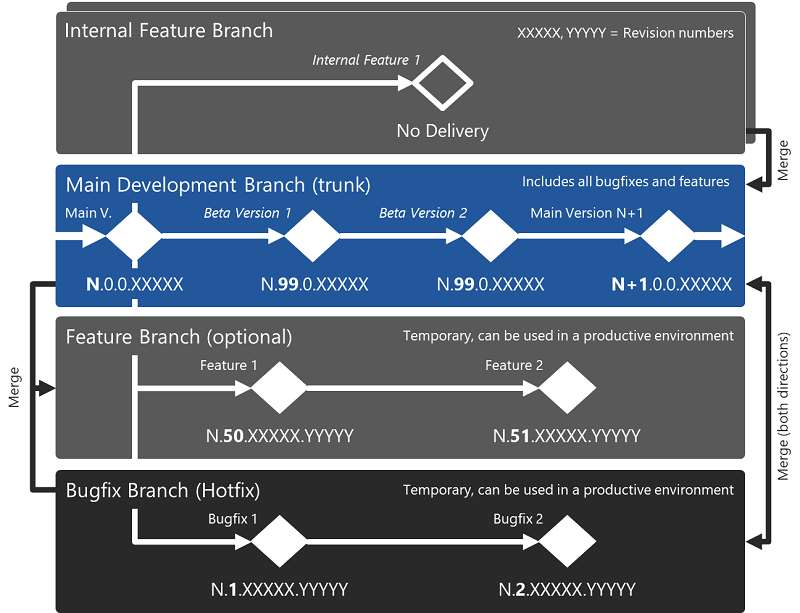 |
Open Test System
|
|
 |
Open Test System
|
|
The aim of the versioning and branching concept is to ensure that the versioning of a software version can be clearly identified at any time:
In addition, the development process should ensure that:

<MainVersion>.<BranchCategoryVersion>.<BranchRevision>.<Revision> (Example: 7.50.48298.49075)
| Version Type | No. | Description |
|---|---|---|
<MainVersion> | N | The major version number contains new features in defined release cycles. It is continuously incremented. |
<BranchCategoryVersion> | 0 | Delivered major version of the main branch. Exists exactly once per major version. |
| 99 | Beta version of the main branch. Will not be incremented. | |
| 1+ | Stabilization branch for mandatory hotfixes from the last major release. Contains ONLY hotfixes and no new features. Continuously incremented. | |
| 50+ | Feature branch for mandatory features that are required before the next major release. Can also be used as a stabilization branch. Continuously incremented. | |
<BranchRevision> | Revision number from which a branch was created. Always has the value 0 in the main branch. | |
<Revision> | A unique revision number assigned automatically by the source code management system, which is continuously incremented with each source code change. |